Effective and Attractive Ways to Make Building Windows Safe for Birds
Every year in the United States, collisions with glass kill up to 1 billion birds. The good news is that we know how to address this crisis: Add patterns to glass that make it visible to birds and you will prevent collisions.
All buildings are a collision threat. This means that making a real dent in collision numbers requires fixing homes, low-rise, and high-rise buildings.
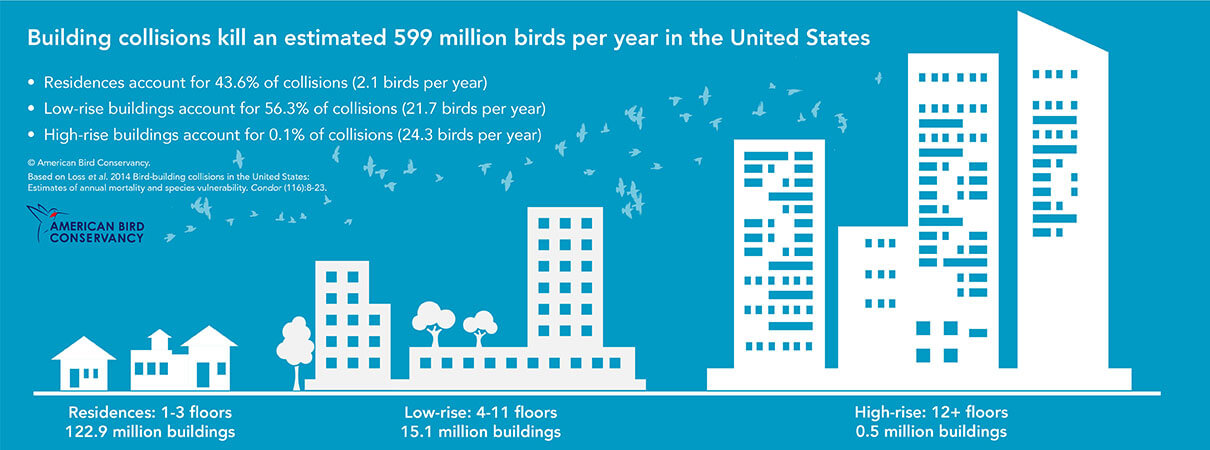
Graphic by American Bird Conservancy
To view ABC's list of proven solutions to fix deadly windows on existing homes and other buildings – changes known as retrofits – visit birdsmartglass.org. Watch for our new collisions website in the coming weeks.
Often, retrofits are mentioned in regard to home windows, but a growing cadre of low-rise building owners are also stepping up to save birds. This is an important group given the high mortality and large number of buildings of this size.
Below are five large retrofits that have made a difference for birds:
Northwestern University
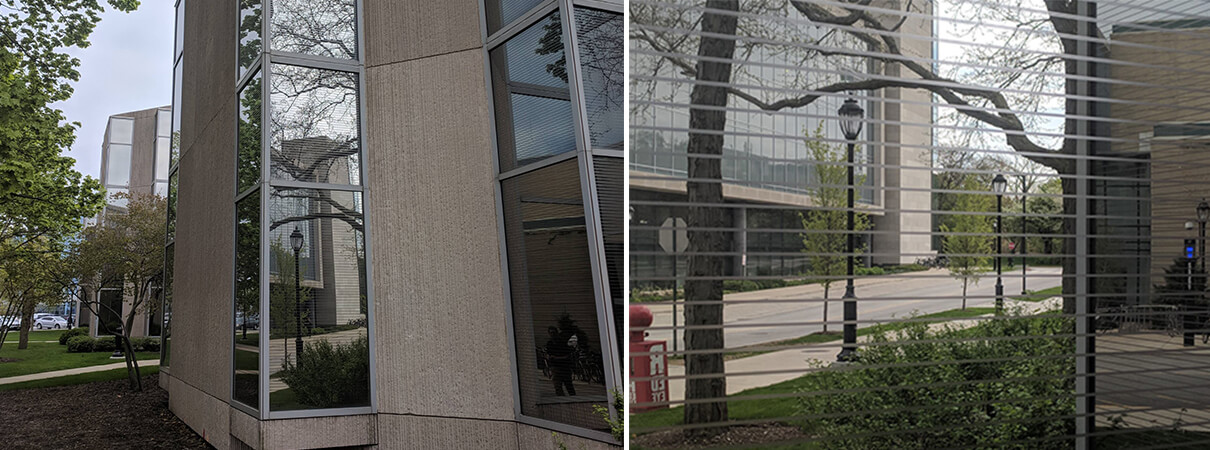
Francis Searle Hall, Northwestern University. Photos by American Bird Conservancy
Northwestern University, in partnership with Chicago Bird Collisions Monitors, American Bird Conservancy, and Bird-Friendly Evanston, has been monitoring its campus for bird strikes to determine the deadliest buildings.
Thus far, the university has applied bird-friendly window film retrofits to two buildings, Francis Searle Hall and the Kellogg School of Management. Initial data are in on Francis Searle Hall: Window film installed in fall 2017 reduced collisions by 95 percent (when data from spring 2017 and spring 2018 are compared). Learn more.
Cleveland State University (CSU)
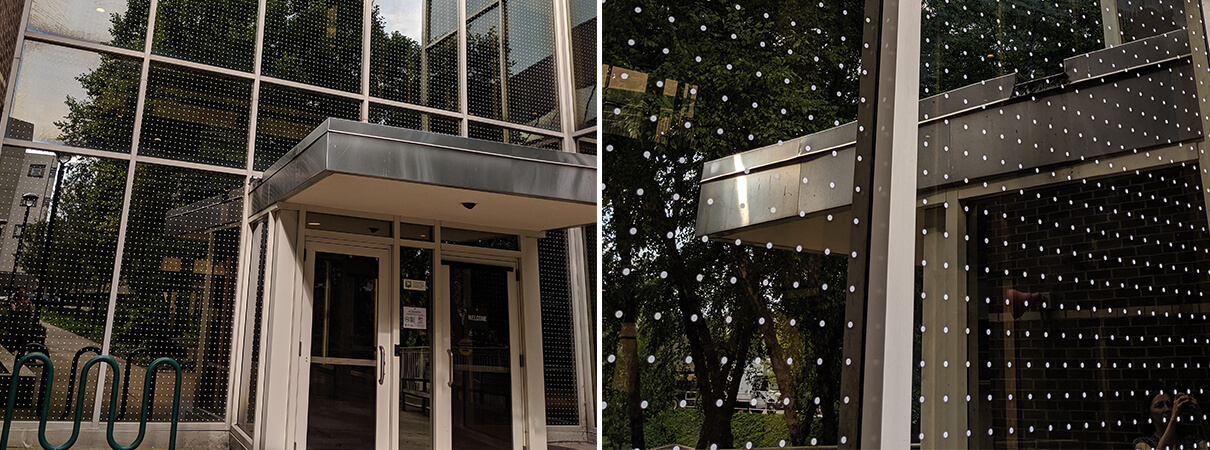
Cleveland Marshall College of Law Library, Cleveland State University. Photos courtesy of Cleveland State University
The Cleveland-Marshall College of Law Library has glass walls that strongly reflect trees, a recipe for a collision problem. The CSU Department of Sustainability, Lights Out Cleveland, and American Bird Conservancy worked to design a retrofit window film to fix this problem.
This project was completed on one building façade in the summer of 2019, just ahead of fall, which is the worst time of year for collisions. The retrofit, which put 3/8” white dots spaced 2 inches apart on the glass, reduced fall 2019 collisions to zero!
CSU is going to continue to evaluate the campus for collisions and retrofits, and has changed its policies so that collisions will be considered in building design and renovations. Learn more.
Jacob Javits Convention Center (or Javits Center)
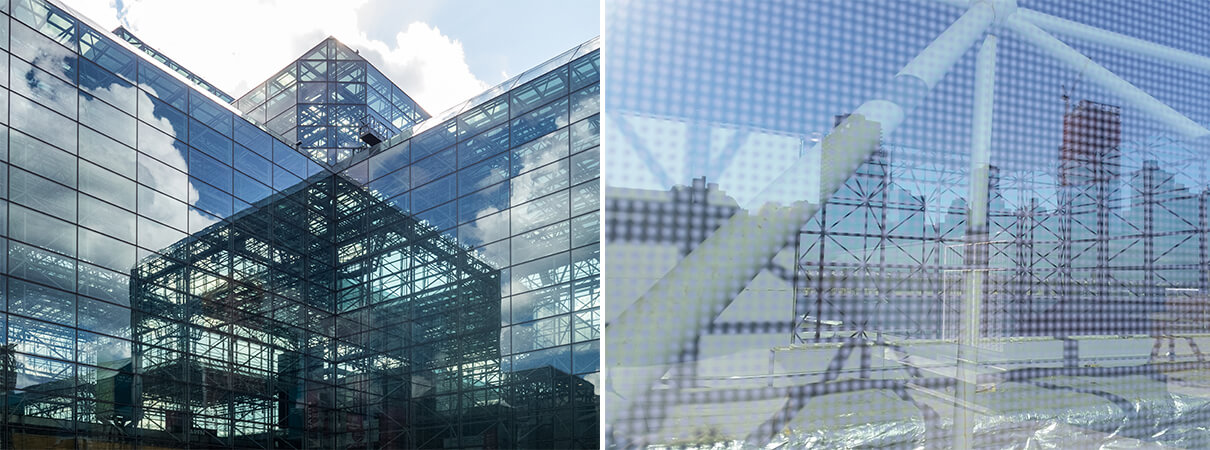
Javrits Center. Photos by Ajay Suresh (left) and Susan Elbin (right)
The Javits Center has been monitored for collisions for years by the New York Audubon Society. With its exterior consisting almost entirely of reflective glass, it's easy to see why this building was once known as one of the city's top bird-killing buildings.
Ahead of a planned renovation to replace the building's glass with energy-efficient glass (among other things), New York City Audubon worked with the architects to make sure that the newly installed panes would be bird friendly. Because this project changed the glass rather than modifying it, it is technically a renovation and not a retrofit, but this is a terrific way to ensure bird-friendly windows for life.
The new glass is patterned using frit (a partial layer of ceramic on the surface of the glass) that is imperceptible at a distance but which alerts birds to the presence of glass with enough time for them to change flight paths and avoid collisions.
The renovation not only replaced the existing glass but also added new glass – and it reduced collisions by 95 percent while saving energy, and therefore money, all at the same time! Learn more.
Patuxent Wildlife Research Center – Artwork That Saves Lives
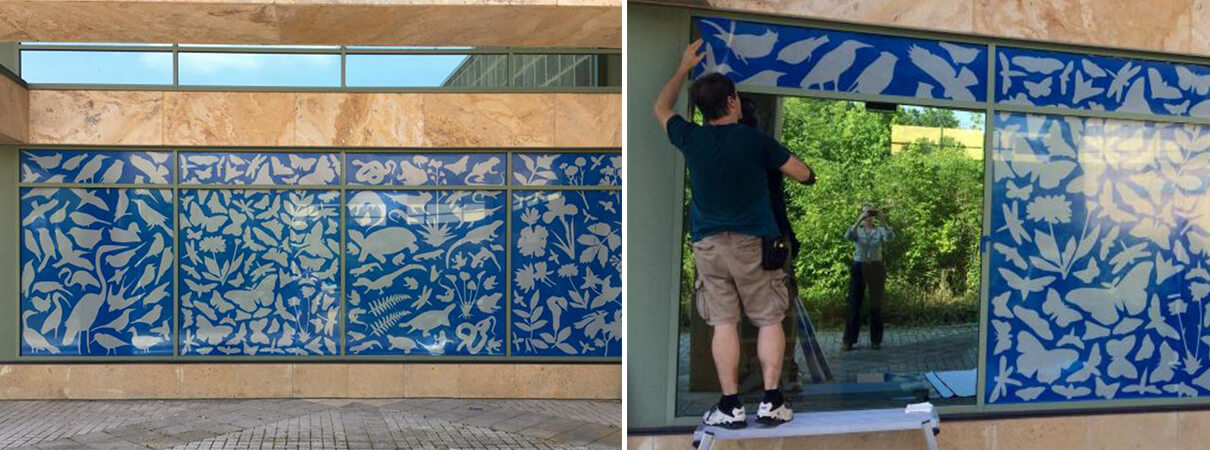
Patuxent Wildlife Research Center. Photos by Lynne Parks
Many retrofit options create uniform patterns in windows so that they do not attract people's attention. In fact, bird-safe glass patterns go largely unnoticed. However, imperceptibility is not always the goal.
Artists like Lynne Parks use their beautiful artwork to create window films and decals that prevent collisions. This solution is beautiful and can be terrific for an area with a collision problem where the building owner would like to make a unique, bold statement while saving birds' lives. Learn more.
University of Chicago
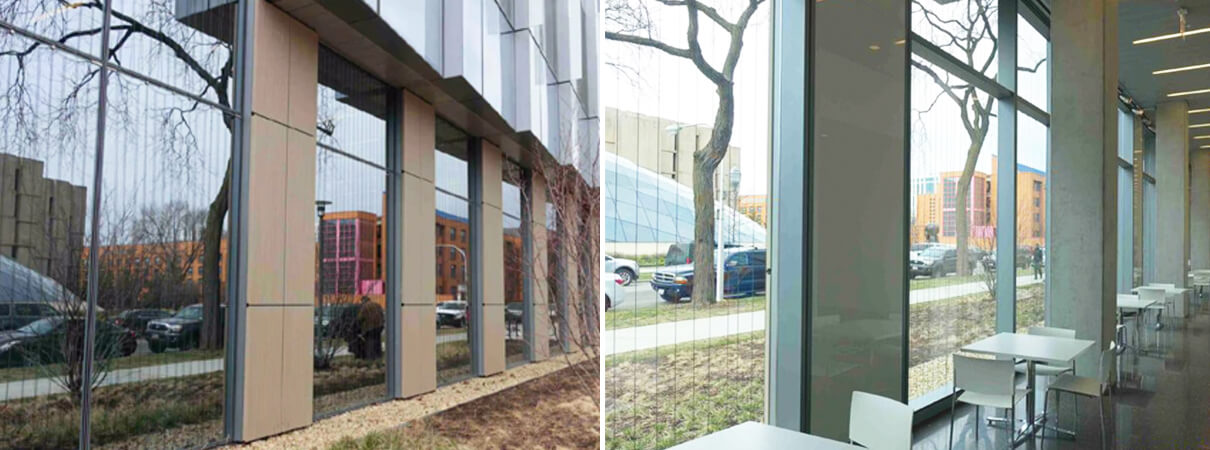
William Eckhardt Research Center, University of Chicago. Photos by Acopian BirdSavers
Not every solution for a large building has to involve window films or changing the glass. There are many other ways to fix deadly windows.
One popular, effective, easy-to-install, and cost-effective method is called Acopian BirdSavers, more generally known as a zen wind curtain. This option involves hanging paracord on the outside of windows to form vertical lines that warn birds there is an obstacle to be avoided. (The paracord can also be fastened at the bottom so that it does not move in the breeze.)
The University of Chicago employed this solution on one of its problem buildings, quickly adding a simple pattern that effectively reduced collisions. This is also a great solution for home windows. Learn more.
 Dr. Bryan Lenz is ABC's Bird Collisions Campaign Manager. He earned his Ph.D. at Tulane University and worked as the Director of the Community Conservation program at Bird City Wisconsin, and as the Chief Scientist at the Western Great Lakes Bird & Bat Observatory. At ABC, Bryan works to reduce the collision threat that the built environment, especially glass, poses to birds. His work incorporates research, design, legislation, building codes, education, outreach, and marketing.
Dr. Bryan Lenz is ABC's Bird Collisions Campaign Manager. He earned his Ph.D. at Tulane University and worked as the Director of the Community Conservation program at Bird City Wisconsin, and as the Chief Scientist at the Western Great Lakes Bird & Bat Observatory. At ABC, Bryan works to reduce the collision threat that the built environment, especially glass, poses to birds. His work incorporates research, design, legislation, building codes, education, outreach, and marketing.


















































